The third-longest river in Italy with a length of 406 kilometers (252 miles) is the Tiber and it flows through the country’s capital city, Rome.
The river played an important role in the city’s history because of the numerous bridges that were constructed across it.
Only one bridge in Rome that was completed in classical antiquity survives today. Most ancient bridges have been modified or completely rebuilt to modern standards.
Many amazing bridges in the city incorporate different types of architecture, including Renaissance, Baroque, and Neoclassical designs. This list also includes a couple of modern bridges that were only completed recently.
Let’s take a closer look at some of the most famous bridges in Rome!
1. Ponte Milvio
The Ponte Milvio or “Milvian Bridge” is one of the most important bridges in the history of Rome. It’s here that the Battle of the Milvian Bridge took place between Constantine the Great and Roman Emperor Maxentius. The latter was defeated and it led to the Imperial rule of Constantine the Great.
A bridge has existed here in the northern part of the city since the year 206 B.C. It has been destroyed and rebuilt multiple times, including in ancient times and during the Middle Ages. The last renovation phase that gave the brick bridge its current appearance took place in 1850.

2. Ponte Sant’Angelo
The Ponte Sant’Angelo was originally known as the Pons Aelius and was originally completed by Roman Emperor Hadrian in the year 134 A.D. The construction of the ancient bridge coincided with the completion of the Mausoleum of Hadrian, a towering building now known as the Castel Sant’Angelo.
This is without a doubt the most picturesque bridge in Rome. It’s clad with travertine marble and is decorated with sculptures by Bernini, one of the Baroque sculptor’s final projects. The bridge features five arches and three of them are of ancient Roman design.
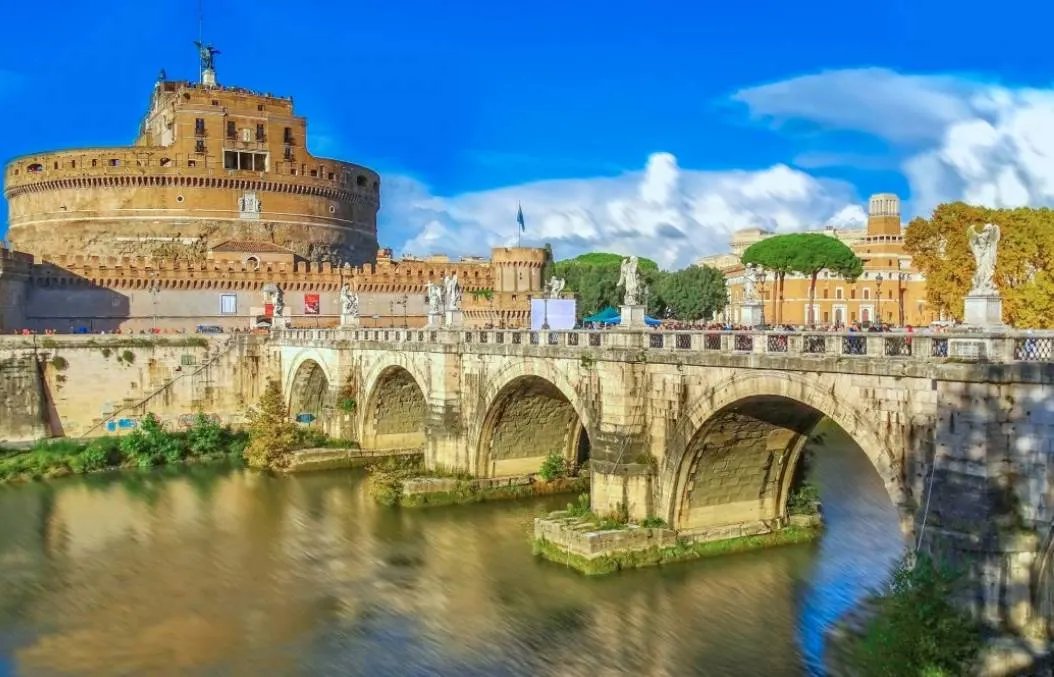
3. Pons Aemilius

Pons Aemilius is the oldest stone ancient Roman bridge that still partially stands in the city today. This massive bridge was completed between 179 and 142 B.C. and was preceded by an even older wooden bridge. It’s located just west of the Colosseum and the Roman Forum.
It was once one of the busiest bridges in ancient Rome because it connected the Forum Boarium, a place dedicated to commercial activities, with the Trastevere district. Today, the bridge is referred to as the “Ponte Rotto” or “Borken Bridge” because nothing more than a single arch still stands.
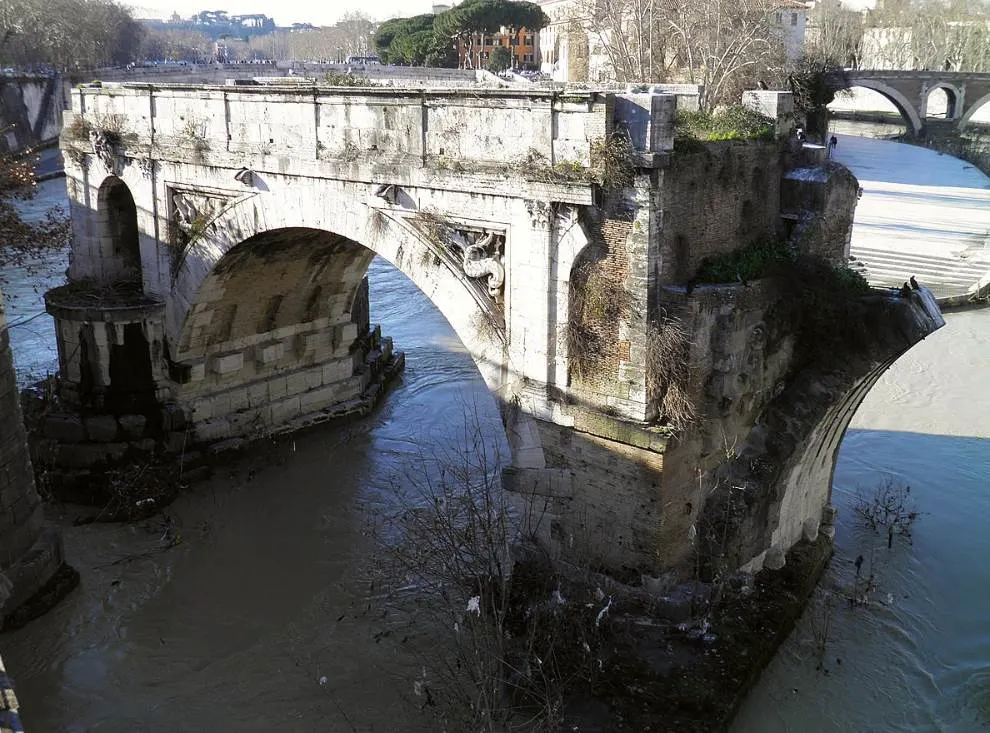
4. Pons Fabricius
Pons Fabricius is the Roman name of a bridge that is currently known as the Ponte dei Quattro Capi. This is officially the oldest ancient Roman bridge in Rome that is still being used today. It was completed in 62 B.C. and pretty much looks exactly how it did back then which is nothing short of astonishing.
It connects Campus Martius with Tiber Island, the only river island in the city of Rome. The bridge was commissioned by a man named Lucius Fabricius, a member of the powerful Fabricius family in the Roman Republic. A Latin inscription on the bridge reads:
Lucius Fabricius, son of Gaius, superintendent of the roads, took care and likewise approved that it be built.
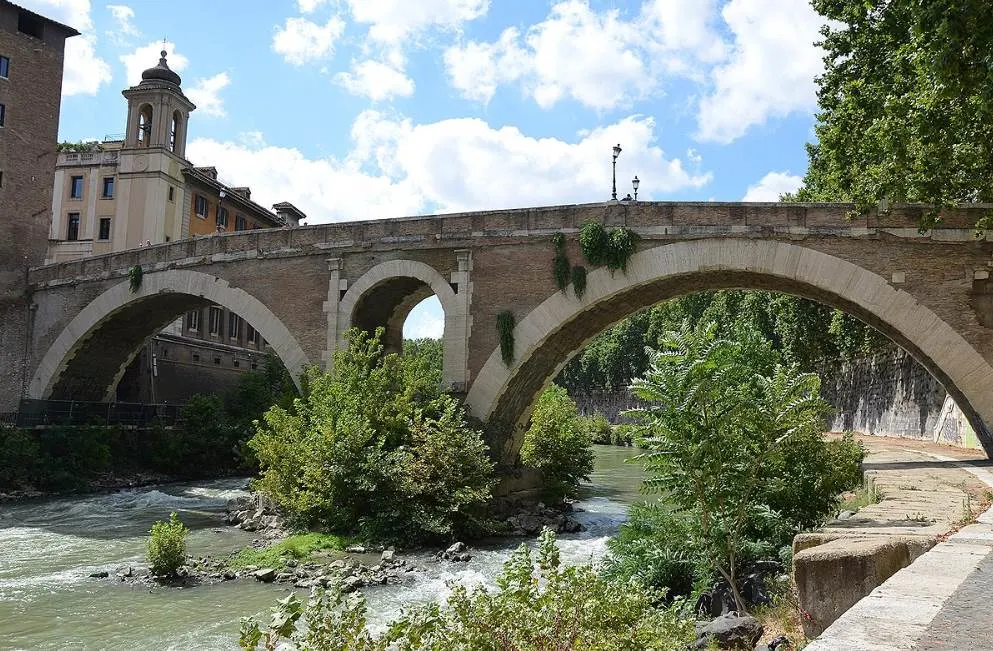
5. Ponte della Musica
The Ponte della Musica or the “Music Bridge is one of the newest bridges that span the Tiber River in Rome. It’s a pedestrian and bicycle bridge that connects the city with the Foro Italico, the massive sports center that, among many other sports venues, features the Stadio Olimpico football stadium.
The bridge was designed in 1999 but construction of the structure didn’t start until 2008. It cost 8 million euros to complete and features a remarkable modern design. Apart from pedestrians and bicycles, public vehicles are also allowed to cross the bridge.

6. Ponte Vittorio Emanuele II
The Ponte Vittorio Emanuele II is another picturesque bridge in Rome because it’s located right next to the Ponte Sant’Angelo and the Castel Sant’Angelo. The construction of this bridge was initiated in 1886 but it wasn’t inaugurated until the year 1911.
The bridge was commissioned to commemorate Vittorio Emanuele II of Italy (1820-1878), the first king of a united Italy. Just like its nearby neighbor, the bridge is heavily decorated with sculptural groups that include several winged victories. Each pier of the bridge features a monumental work of art.
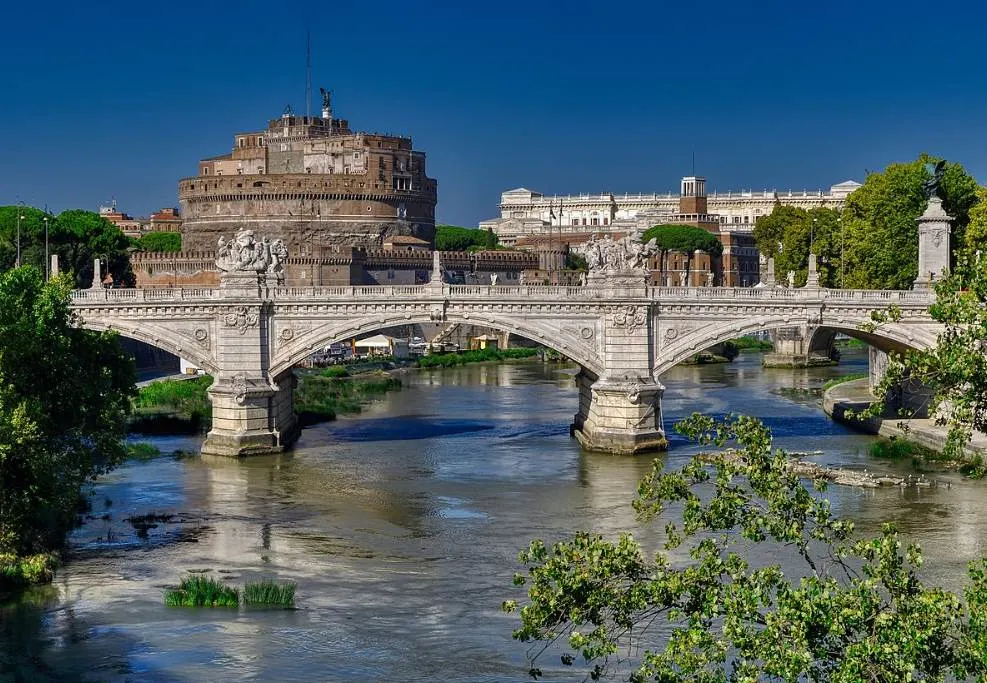
7. Ponte Cestio
The Ponte Cestio is the southern extension of the Ponte Fabricio, the oldest bridge in Rome. Unlike the ancient Roman bridge, this bridge didn’t survive antiquity as it was renovated and rebuilt multiple times. About one-third of the structure still consists of ancient materials.
The first stone bridge in this location was constructed shortly after the completion of the Ponte Fabricio, probably in the 1st century B.C. The stone bridge we see today is a rebuilt version of the ancient bridge that was completed between 1880 and 1892.
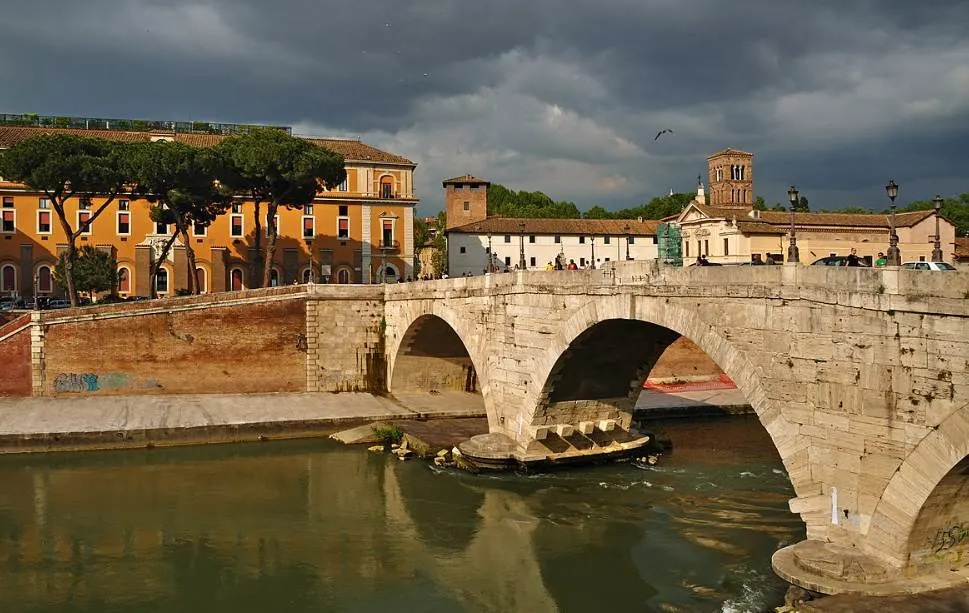
8. Ponte Sisto
The Ponte Sisto is located just west of Tober Island and was constructed during the Renaissance between 1473 and 1479. The bridge was commissioned by Pope Sixtus IV and it was named in his honor. The foundation of this bridge date back to ancient times.
The Roman name of the bridge in this location was Pons Aurelius but this changed to the Pons Antoninus during the Middle Ages. This ancient bridge was destroyed in the 8th century when Lombard king Desiderius invaded Rome. The current bridge features an oculus in its central span, a feature that was integrated to relieve the pressure from the Tiber River’s water.

9. Ponte Palatino
The Ponte Palatino is located within the area as well because it borders Tiber Island to the southwest. It connects the Lungotevere Aventino to Lungotevere Ripa which are situated within the Rioni Ripa and Trastevere respectively.
What’s remarkable about the Ponte Palatino is that it was constructed between 1886 and 1890 to replace the partially destroyed Pons Aemilius. The single arch that still stands on this 2,200-year-old Roman bridge stands just north of it. The name of the bridge is a reference to the nearby Palatine Hill, the most central of all 7 Historic Hills of Rome.
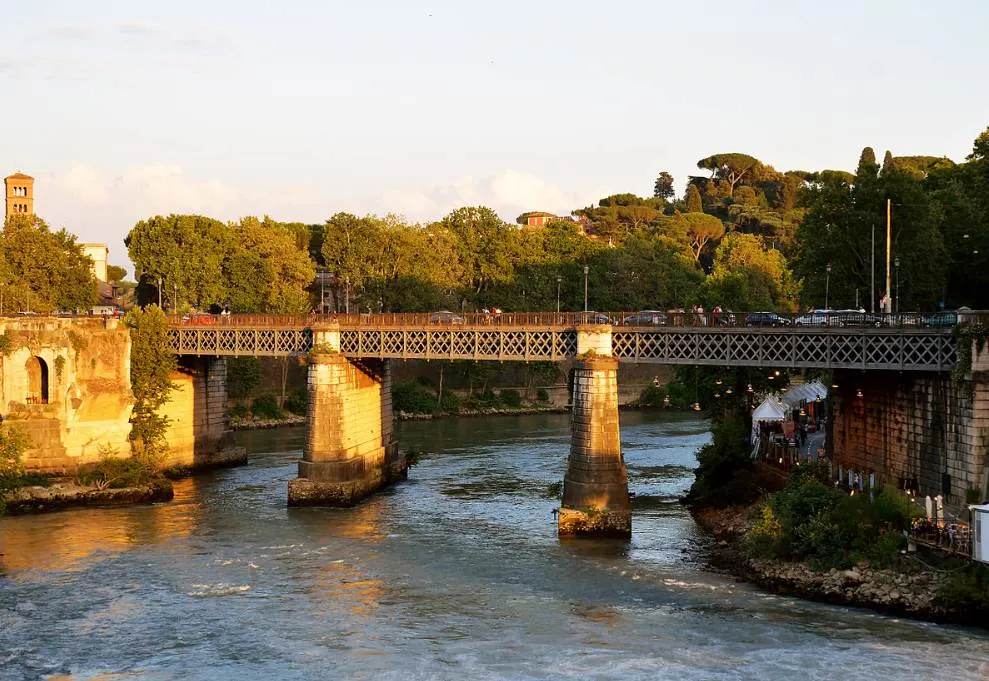
10. Ponte Settimia Spizzichino
The Ponte Settimia Spizzichino is a huge reticular bridge that was inaugurated in June 2012. It doesn’t span the Tiber River but rather the Rome-Ostia Lido metro and railway line B. It connects the Garbatella district with the Ostiense district in the southern part of the city.
The bridge was named in honor of Settimia Spizzichino (1921-2000), an Italian woman who was one of the only survivors of the Holocaust in Rome. The reason is that she lived in this area for the majority of her life. The bridge was inspired by bridges designed by Spanish architect Santiago Calatrava, including the Ponte Alameda in his native Valencia and the Sundial Bridge, a famous bridge in California.

